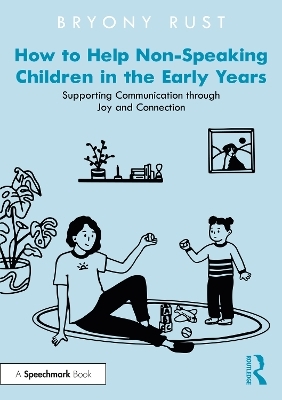
How to Help Non-Speaking Children in the Early Years
Routledge (Verlag)
978-1-032-29519-0 (ISBN)
In every setting there are children who struggle to communicate. When they’re not talking, or only using a handful of words, it can be hard to know how to help. In this book, you’ll be encouraged to spot early moments of communication and respond with clarity. You’ll find an invitation to stop doing and start noticing, to try new things and collaborate with the team around you.
The book presents key concepts in bite-size chunks, with a wealth of real-life examples from speech therapy sessions and early years settings. It explores practical strategies to help children develop their foundational speech, language and communication skills, and includes fresh ideas to:
· Build honest and supportive conversations with parents about communication needs
· Value empathy and imagination as we tune in to each child’s world
· Take a pro-neurodiversity lens to inform your practice
· Measure progress and support professional development.
Communication is core to our sense of wellbeing, personal agency and belonging. With a focus on fostering joyful moments of connection, this book offers a fresh perspective and a dose of encouragement for all early years practitioners, speech and language therapists, SENCOs and key people looking to support positive communication development in the children in their care.
Bryony Rust, aka SaLT by the Sea, is a speech and language therapist sharing her own experiences of what works with young children, learned through years of providing therapy, training practitioners and collaborating with caregivers. Bryony is also a keynote speaker and clinical supervisor, helping others navigate the surprise delights and challenges of helping young children learn to talk. Working in close partnership with families, her focus is on valuing each child’s unique contribution, fostering personal agency and a sense of belonging. To find out more, visit saltbythesea.com
CHAPTER 1. What this guide is and how it can help you.
What we’re aiming for (Help them learn it’s worth the effort)
Stop doing, start noticing (this is the hardest part)
What to expect from this book
CHAPTER 2. Expand your definition of communication.
Speech, language and communication
Talking isn’t everything
Always respond
Understand why we bother
Look out for opportunities
Understand what’s going on behind the scenes
CHAPTER 3. Build relationships.
Include everyone from the beginning
Aim for a flat hierarchy
Practise active listening
Avoid fix-it mode
Stay out of judgement
Regulate to communicate
Realise our shared humanity
‘Celebrate with me’
CHAPTER 4. Start from strength.
Tell a story of hope
Describe what the child can do
Shift your language from disorder to difference
Consider needs, not problems
Trust in capacity
CHAPTER 5. Let the child lead.
Tune in to the child’s point of interest
Give it space
Look for the invitations
Directing vs. Responding
Give attention to get attention
Solutions for when it’s hard:
Allow it to look like ‘nothing’
Regulate to communicate
Allow the play to look unexpected
Avoid the toy trap
CHAPTER 6. Choose your focus.
Decide what’s important
A note on mindfulness
Understand where the child’s at
Write goals for the adults, not the child
Write SCRUFFY goals
CHAPTER 7. A strategies list
Allow yourself to do less
Embrace the awkward silence
Reflect the child
Pay attention to the details
Play with words
Use big gestures
Make your phrases sing
Use sound effects
Give, don’t quiz
Make it easy
CHAPTER 8. Keep going.
Imagine something different
We’re in the business of relationships
The simple version
Share with others
Choose one thing
Stick with it
Embrace everything
It’s all in the noticing
Useful links
Bibliography
Index
| Erscheinungsdatum | 06.11.2024 |
|---|---|
| Zusatzinfo | 13 Line drawings, black and white; 13 Illustrations, black and white |
| Verlagsort | London |
| Sprache | englisch |
| Maße | 148 x 210 mm |
| Gewicht | 453 g |
| Themenwelt | Sachbuch/Ratgeber ► Gesundheit / Leben / Psychologie |
| Medizin / Pharmazie ► Gesundheitsfachberufe ► Logopädie | |
| Sozialwissenschaften ► Pädagogik ► Schulpädagogik / Grundschule | |
| Sozialwissenschaften ► Pädagogik ► Sonder-, Heil- und Förderpädagogik | |
| Sozialwissenschaften ► Pädagogik ► Vorschulpädagogik | |
| ISBN-10 | 1-032-29519-8 / 1032295198 |
| ISBN-13 | 978-1-032-29519-0 / 9781032295190 |
| Zustand | Neuware |
| Haben Sie eine Frage zum Produkt? |
aus dem Bereich


